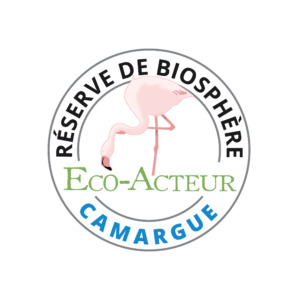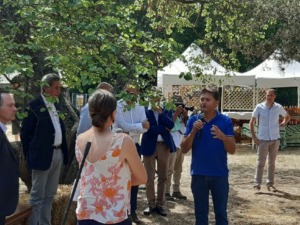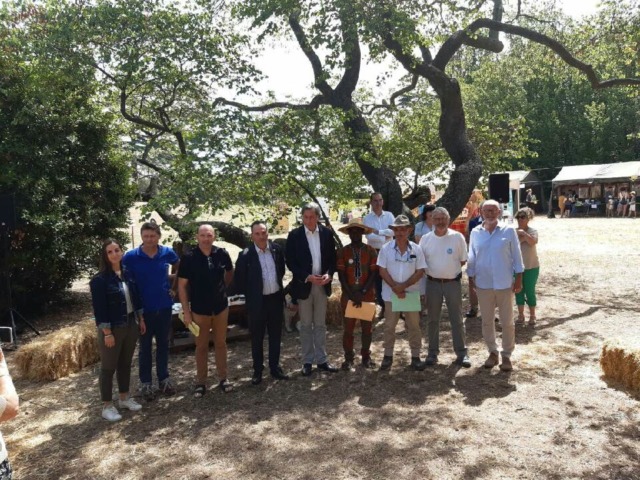On Saturday 4 June 2022, the Tour du Valat had the honour of joining the growing network of eco-actors committed to preserving the Camargue Biosphere Reserve, a territory designated and recognised by UNESCO.
UNESCO Biosphere Reserves

Man and Biosphere (MAB) is a UNESCO programme that reconciles the preservation of the Biosphere with human activities. It affords international recognition to areas of outstanding value where environmental stakes are high. Specific areas, called Biosphere Reserves, covering one or more terrestrial and coastal/marine ecosystems are identified. They are listed as a biosphere reserve through the request of the country concerned and subsequently designated by the International Coordinating Council. Today, there is a world network of biosphere reserves in which countries participate on a voluntary basis.
This network currently includes 631 Biosphere Reserves, and the Camargue is one of the 4 located in the Provence-Alpes-Côte d’Azur Region.
The Camargue: an exceptional natural territory
Between the Rhone River and the Mediterranean Sea, the Camargue Biosphere Reserve has covered the entire Rhone biogeographical delta since its revision in 2006. A vast natural area, it is located between two very densely populated regions close to the cites of Montpellier, Nîmes, Arles, and Marseille and the industrial site at Fos-sur-Mer.
Although the Camargue is essentially a horizontal landscape, there are many differences in relief which are a source of diversity: these include alluvial ridges of the former and current arms of the Rhone and dune strips created by marine currents and the historical shores of the Mediterranean.
The network of eco-actors in the Camargue
To encourage the ecological transition, Biosphere Reserves promote the activities of socio-economic stakeholders who are committed to the environment and sustainable development through several mechanisms.
Eco-actor commitment charters are validated by the National Technical Committee (NTC), which ensures that they are sufficiently far-reaching, realistic, and achievable within the 3-year timeframe.
The Tour du Valat joins the eco-actors of the UNESCO Camargue Biosphere Reserve
On Saturday 4 June, the Tour du Valat was warmly welcomed by the Camargue Biosphere Reserve in the fabulous setting of the Château d’Espeyran.

Nicolas Beck, agro-ecology and energy restoration project manager at the Tour du Valat, signed the commitment charter, a document of principles to which an eco-actor formally commits. The Tour du Valat has thus officially joined the network of Camargue Biosphere Reserve eco-actors.
Eco-actors contribute, at their own geographic level, to strengthening the exceptional quality and character of their territories.
|
Why the Tour du Valat ?
The Tour du Valat Estate covers a total area of 2,649 ha in two distinct geographical areas in the Camargue:
- The Tour du Valat Estate itself, near the village of Le Sambuc (commune of Arles, Bouches-du-Rhône), with a total surface area of 2,548 ha (1,845 ha are classified as a Regional Nature Reserve), and 715 ha of agricultural fields and buildings, the Verdier Marshes, the Petit Badon Estate, and the Commanderie Dunes ;
- The Petit Saint-Jean Estate, with a surface area of 101 hectares, is located thirty kilometres to the west in the part of the Camargue located in the Gard Department, in the commune of Saint-Laurent-d’Aigouze.
“In addition to protecting their threatened biodiversity, on these estates we are trying to show that this biodiversity is compatible with various uses by people, experimenting with different approaches, such as an agroecological project that combines organic viticulture, orchards and livestock farming which optimises the synergies between an agricultural system and the natural environment, while another project focuses on the shared management of a 120-hectare marsh with the inhabitants of Le Sambuc, the village next to the Tour du Valat,” explains Jean Jalbert, Director General, Tour du Valat.
By signing this charter, the Tour du Valat is committed to working for the environment and the sustainable development of the area.
To that effect, it will continue to adapt its practices in order to limit the impact of its activities on global warming; through its continuously evaluated and updated management plans, it will put in place the conditions for maintaining, respecting and enhancing the environments and landscapes of the Camargue Biosphere Reserve; finally, through its agro-ecology project, it will preserve, conserve, and enhance natural resources in the Camargue Biosphere Reserve.
